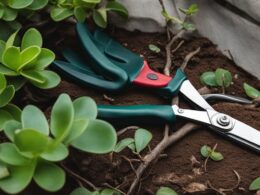Welcome to our volume conversion guide, where we will explore the conversion between quarts and cubic feet. Whether you are working on a DIY project, following a recipe, or dealing with fluid volumes, understanding the relationship between quarts and cubic feet can be incredibly useful. In this guide, we will provide you with the conversion rate and step-by-step instructions on how to convert quarts to cubic feet.
A cubic foot is a three-dimensional measurement in the SI unit, equivalent to approximately 0.0283168 cubic meters. On the other hand, the US liquid quart is a unit of fluid volume that is equal to one-fourth of a gallon or four cups. These units are commonly used in different applications, such as construction, cooking, and engineering.
Knowing the conversion rate allows you to estimate storage capacity, determine the volume of materials needed, or make accurate volume comparisons. By converting quarts to cubic feet, you are using a standardized unit of measurement that simplifies calculations and ensures consistency.
To better understand this conversion, let’s go into more detail about the conversion rate and the benefits it offers. So let’s dive in and explore how to convert quarts to cubic feet!
Conversion Rate: Quarts to Cubic Feet
Converting quarts to cubic feet is a straightforward process that involves multiplying the number of quarts by the conversion rate. The conversion rate for quarts to cubic feet is 0.038889.
The formula to calculate the volume in cubic feet is: ft³ = US qt dry * 0.038889. Now, let’s look at some examples:
- 1 quart is equal to 0.04 cubic feet.
- 5 quarts is equal to 0.19 cubic feet.
- 50 quarts is equal to 1.56 cubic feet.
Converting quarts to cubic feet allows for easy comparison and measurement of volumes. It is especially useful when dealing with larger volumes, such as storage capacity or project requirements. By understanding the conversion rate, you can confidently estimate and work with the volumes you need.
Benefits of Converting Quarts to Cubic Feet
Converting quarts to cubic feet offers several benefits for accurate volume measurement and comparison. Understanding these advantages can help streamline your calculations and ensure precise results.
- Easier measurement and comparison of volumes: By converting quarts to cubic feet, you can easily compare the volume of different substances or containers. This allows for efficient planning and decision-making when dealing with varying quantities of liquids or solids.
- Standardized unit of measurement: Converting to cubic feet provides a widely accepted unit of measurement, particularly when working with larger volumes. This standardization ensures consistency and facilitates clear communication among professionals in different industries.
- Estimating storage capacity: Whether you’re managing your home pantry or a large-scale industrial warehouse, converting quarts to cubic feet helps estimate the overall storage capacity. This knowledge is essential for organizing inventory and optimizing space.
- Determining material volume for projects: Converting quarts to cubic feet is crucial for construction projects, gardening, or any endeavor where accurate volume calculations are necessary. It enables you to determine the precise amount of materials required, helping you save time and resources.
With these benefits in mind, converting quarts to cubic feet becomes an essential skill for those who work with volumes in various applications. Incorporating this conversion into your workflow can enhance accuracy, efficiency, and overall project success.
What is the Volume of Top Soil I Need to Fill a Cubic Foot Area?
When determining the volume of affordable topsoil needed to fill a cubic foot area, it’s important to consider the depth of the soil. Measure the length, width, and depth of the area to calculate the volume in cubic feet. Once you have the volume, you can then determine how much affordable topsoil to purchase per yard.
Conclusion
The conversion rate of quarts in a cubic foot is approximately 29.922078. By multiplying the number of quarts by 0.038889, you can easily convert quarts to cubic feet. Converting quarts to cubic feet provides a standardized unit of measurement and facilitates easier volume comparisons and estimations.
Understanding the relationship between quarts and cubic feet is essential for various applications. Whether you’re determining the storage capacity of a container or calculating the volume of materials needed for a project, converting quarts to cubic feet allows for accurate measurements and ensures consistency across different systems.
By adopting the cubic foot as a unit of volume measurement, you can easily communicate and compare volume quantities in a standardized manner. This can be especially valuable when working with larger volumes or when collaborating with others who may use different units of measurement.









